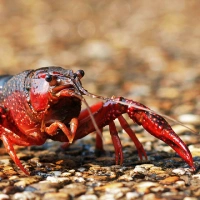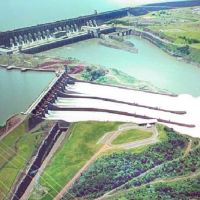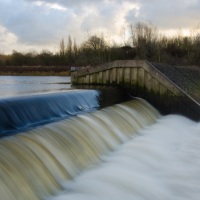Bringing back the UK’s ‘royal’ fish from the brink of extinction

Sturgeons were once so highly prized in the UK that in 1324, King Edward II declared them a ‘royal fish’. However, decades of overfishing, habitat loss and blocked migration routes have caused sturgeons to almost completely disappear from UK rivers and coastlines.
This population decline is not an isolated trend: the International Union for the Conservation of Nature (IUCN) considers sturgeons the most critically endangered group of species on Earth. Across Europe, conservationists are seeking to implement large-scale plans to bring back sturgeon populations from the brink along major rivers such as the Danube.
This week, a team of conservationists led by the Zoological Society of London have launched an ambitious plan to restore populations of Atlantic and European sturgeons to UK waters. The UK Sturgeon Conservation and Action Plan aims to help restore sturgeon habitat and migration passages whilst reducing accidental bycatch. It forms part of major Europe-wide restoration initiatives to help save critically endangered European sturgeons from the brink of extinction.
“Growing up to 5m in length, with long whisker-like barbels and diamond-shaped armoured plates along their backs, sturgeons look like they’ve swum straight out of a palaeontologist’s textbook,” said Hannah McCormick from ZSL. “These impressive and ancient animals were once common in UK rivers and along our coastline, so it’s hardly surprising that they were declared ‘royal fish’ by King Edward II back in the 14th Century.
“Fast-forward seven hundred years, and sturgeons have all but disappeared from our waters, after dam construction in rivers blocking their migration routes and overfishing caused numbers to plummet in the latter half of the 20th century,” McCormick explained.
Both species of sturgeon native to the UK – European and Atlantic – are migratory. They are born in rivers, before migrating downstream to the sea, where they live most of their lives – which can stretch more than 60 years – returning to freshwater every few years to reproduce. This means that restoration efforts need to take into account the wide range of habitats that they pass through, and the numerous people and organisations responsible for their management.
As a result, the new action plan has five key goals. First, to map essential sturgeon habitats and migration routes across UK marine, estuarine and freshwaters to identify areas for restoration and protection from threats. Second, to boost European sturgeon restoration projects – particularly the Pan-European Action Plan for Sturgeons – by supporting UK sturgeon population recovery. Third, to minimise accidental sturgeon bycatch by working with marine fishers.
Fourth, the action plan aims to engage political and public audiences to actively support sturgeon restoration efforts. It highlights the role of sturgeons as ‘flagship species’ which draw attention to wider aquatic conservation issues. Finally, it aims to close evidence gaps around sturgeon populations by supporting scientific research which helps underpin conservation decision-making.
The action plan was created by the UK Sturgeon Alliance – a group of research organisations and NGOs formed in 2020 which works to restore native sturgeon populations. The Alliance have set up a website – Save the Sturgeon – where the public can report sturgeon sightings to help researchers better understand their population dynamics.

“The development of this Action Plan has been an exciting first step that contributes to the European efforts of restoring sturgeons,” said Jenny Murray from the Blue Marine Foundation, a member of the UK Sturgeon Alliance. “This has been a truly collaborative approach that has highlighted the interest and need to see habitats in a good enough condition for their return. The public can support sturgeons return by raising awareness of this beautiful species and reporting any sightings to the Save the Sturgeon website.”
“We now have over 5,200 records of sturgeon in rivers, estuaries and coastal waters all around the UK, since at least 1700, added Steve Colclough from the Institute of Fisheries Management, another member of the member of the UK Sturgeon Alliance. “Our waters clearly formed part of the natural range of these great migrators. Until recently, the numbers visiting us have been so low that these were only recognised as occasional vagrants. In the 18th and 19th century many fish were captured in our rivers and in some cases where they were not offered to the crown, they were removed and destroyed as strange exotic sea monsters. Now we know better, we can help conserve these flagship species for future generations to see.”
///
This article is supported by the MERLIN project.















Comments are closed.